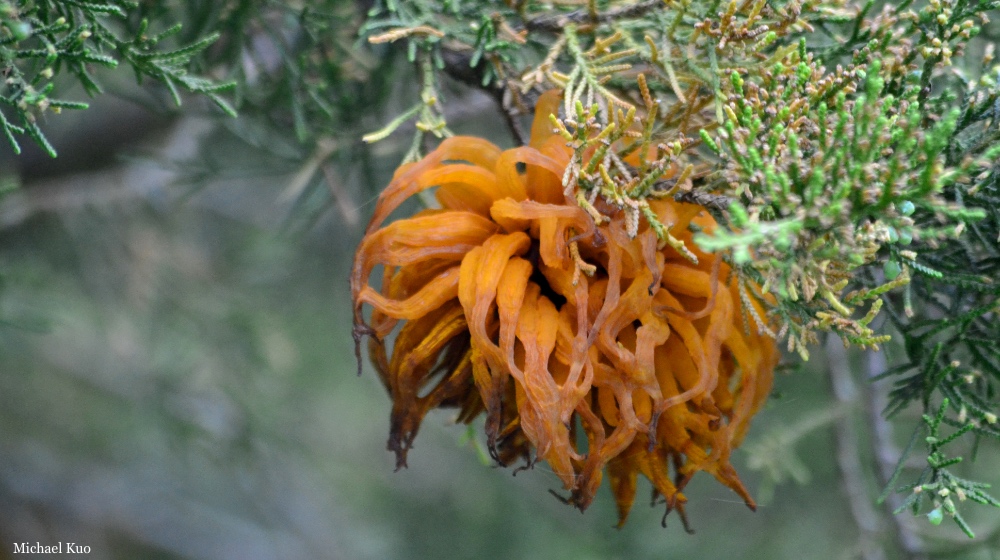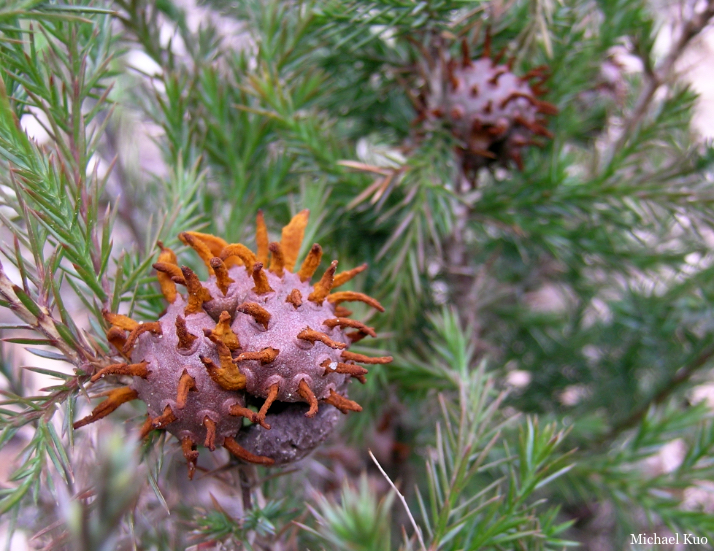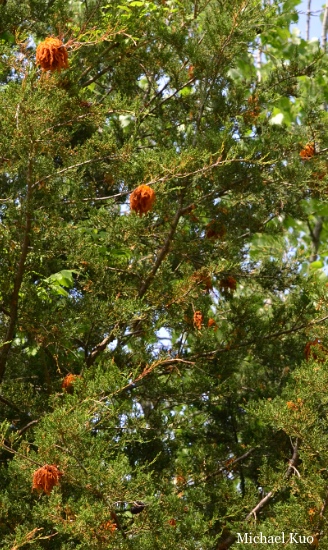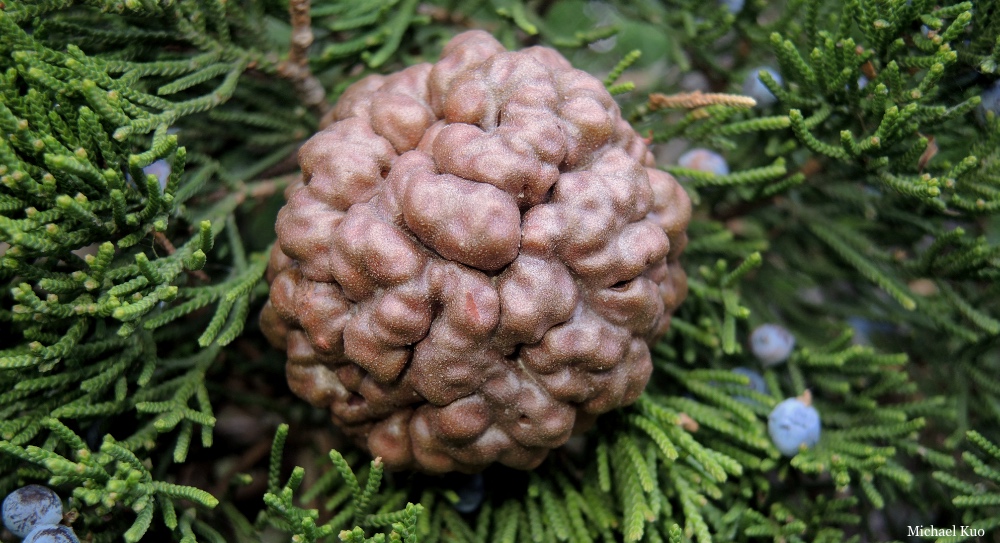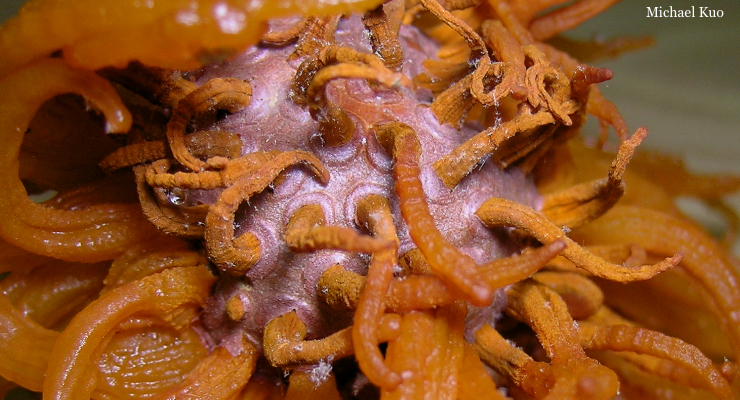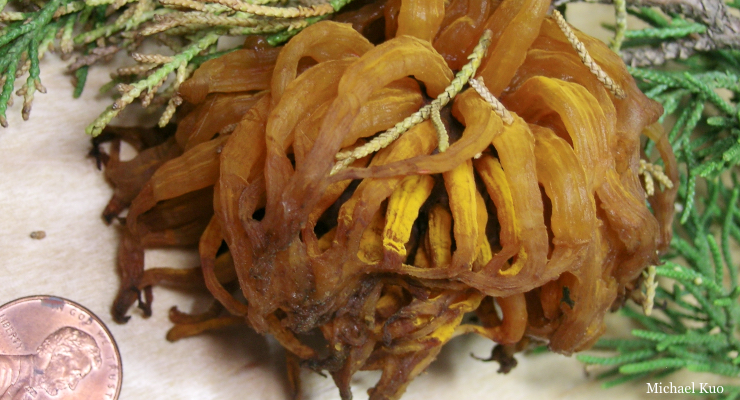 Gymnosporangium juniperi-virginianae (cedar-apple rust) |
|
This bizarre, tentacled creature appears in spring, dangling from the branches of eastern redcedar trees. It is a fungus—more specifically, a rust, like mayaple rust—with particularly bizarre fruiting bodies. The life cycle of Gymnosporangium juniperi-virginianae involves two host trees, eastern redcedar and apple trees, giving the fungus the common name of "cedar-apple rust." The ball-shaped structure underneath the tentacles is a gall, and the tentacles are spore horns that have expanded with moisture; spores are produced and released into the air currents. Somewhere nearby (within a mile or so), if apple trees are present and the spores manage to get to them, the spores land on the young, spring leaves of apple trees and germinate, causing an infection that produces yellowish spots on the apple leaves. In late summer the leaf blisters produce more spores, which then are carried to the redcedar trees—where they germinate on small branches and produce a gall. In the second spring after the gall is formed, it makes spore horns. And so on, back and forth. |
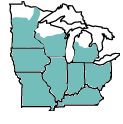 midwestern range |
|
|
|
|
|
|
|
|
|
|
|
References: Crowell 1934, Barnes 1968. Kuo, Michael & Melissa Kuo (March, 2021). Gymnosporangium juniperi-virginianae (cedar-apple rust). Retrieved from the midwestnaturalist.com website: www.midwestnaturalist.com/gymnosporangium_juniperi-virginianae.html All text and images © , midwestnaturalist.com. |
